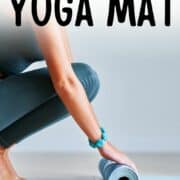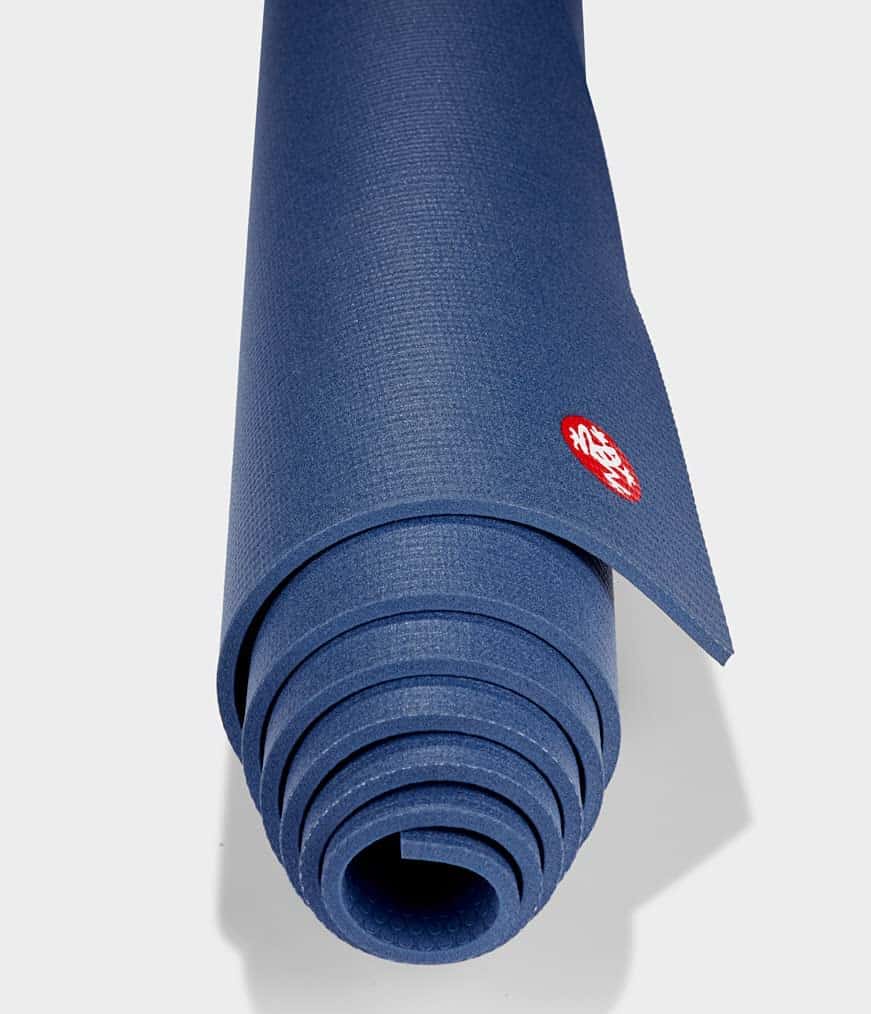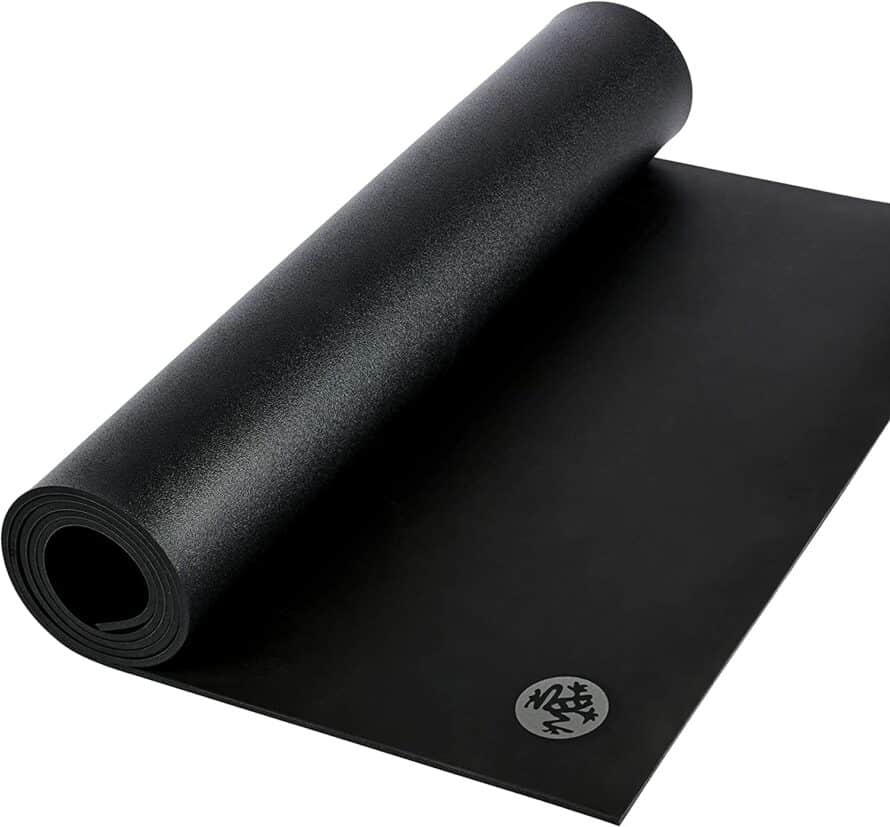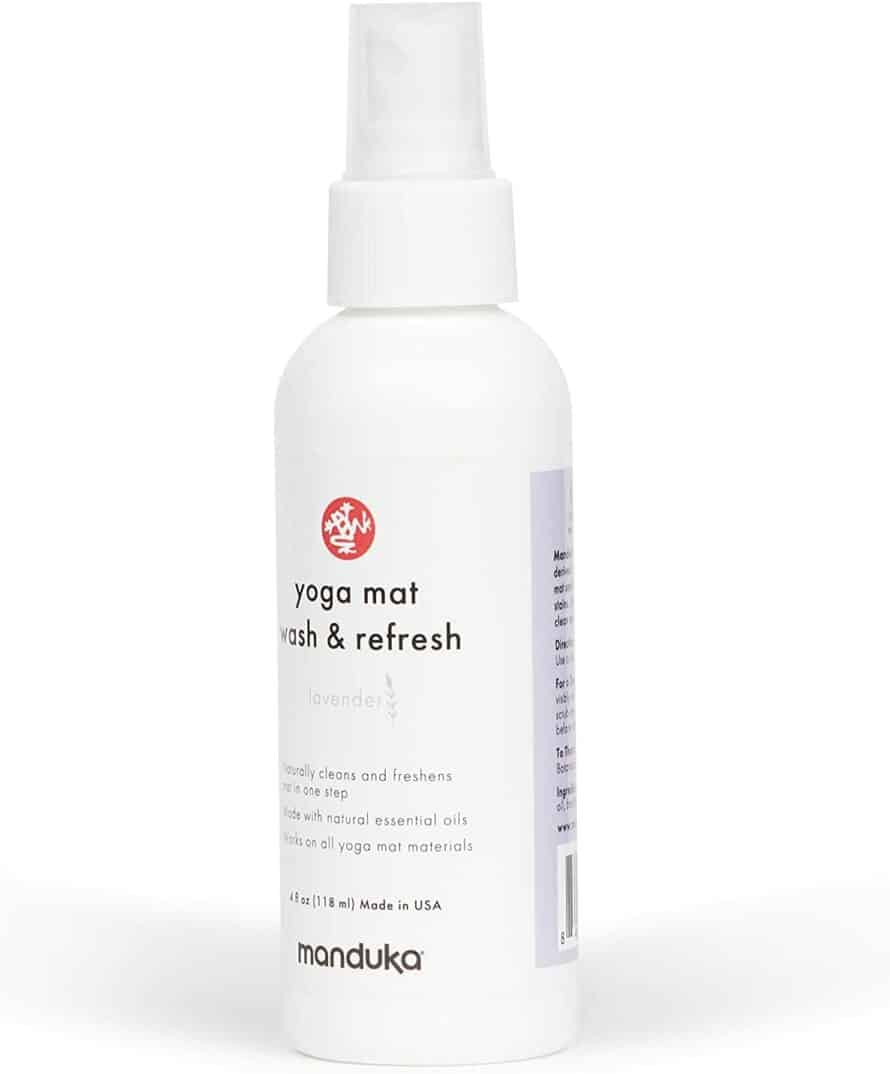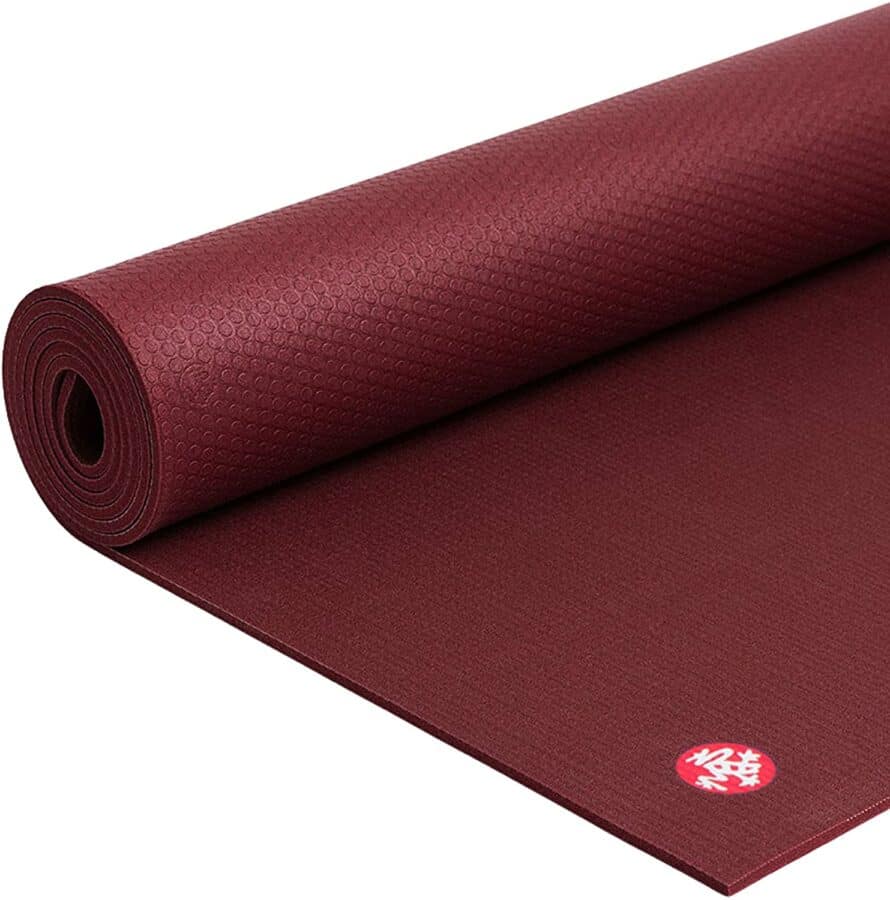How to Choose the Best Yoga Mat For Your Needs in 2023
This post may contain affiliate links. All opinions shared are my own. As an Amazon Associate I earn from qualifying purchases. Click to view our full disclosure.
All content is created by humans – not AI.
We’ve found the best high quality yoga mats and answered some of the top questions so that you can find your perfect yoga mat!
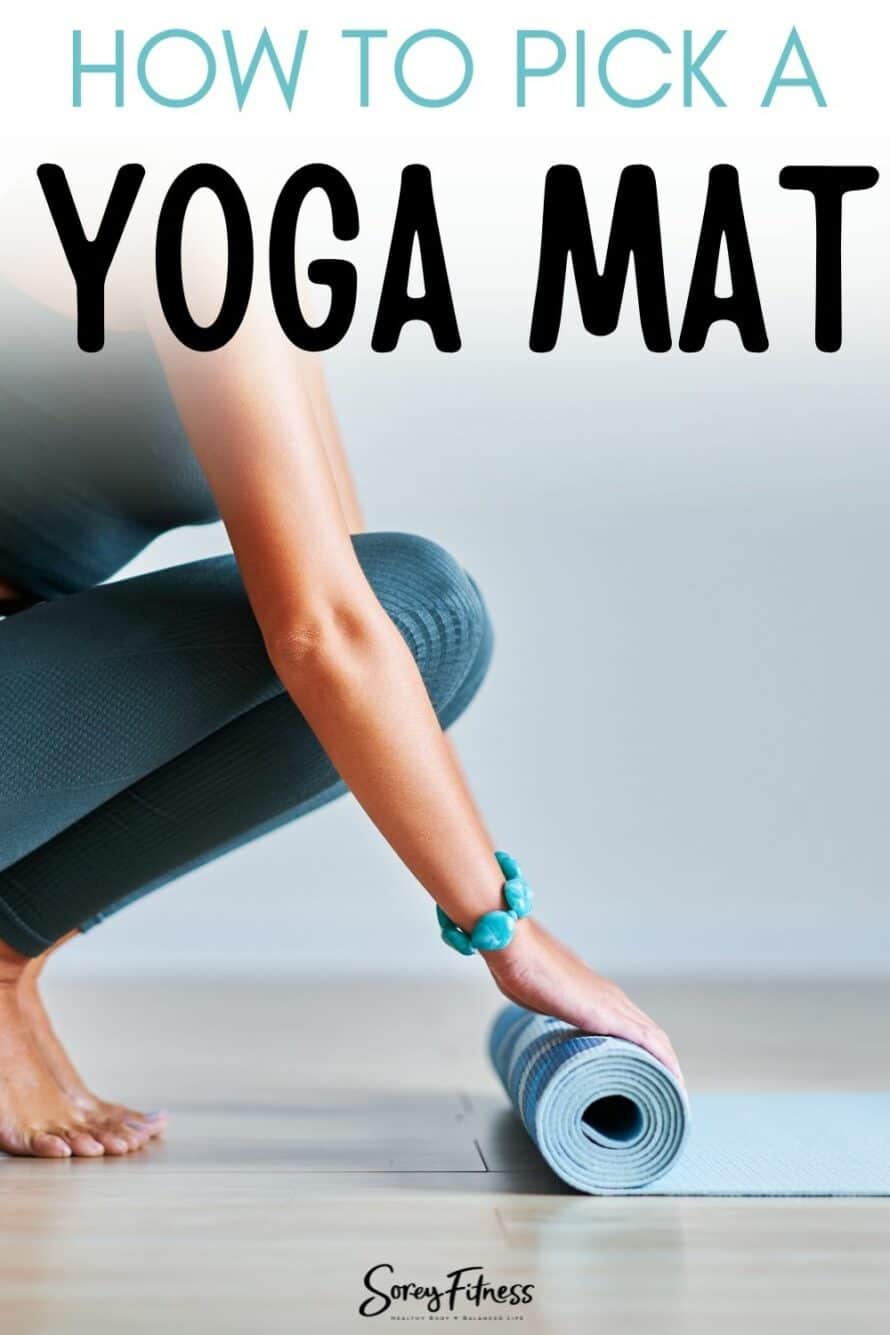
Is it necessary to use a yoga mat?
A yoga mat helps you from sliding around or losing alignment during a yoga class. It can also offer cushion to your joints in certain yoga poses. So while it’s not necessary for most yoga poses, it is very helpful in maintaining proper form.
How do you choose a yoga mat?
Depending on the style of yoga you’re practicing, you may want to look for a specific type of mat. For example, a thin, a no-slip surface or textured mat is great for hot yoga; whereas, thicker mats offer more cushion and are perfect for restorative yoga classes. You may also want to consider the price and eco-friendliness.

What’s the best non toxic yoga mat?
It’s a good idea to look for eco-friendly materials like PVC mats or mats made of natural rubber. There are several to pick from.
We like the Manduka mat eKo series which is made of 100% non-Amazonian tree rubber.
Our top pick is the MANDUKA PRO SERIES though!
It’s a lightweight mat that is 100% PVC. The textured dots on the Pro Series also are great for creating a good grip.
Both come with a lifetime warranty! Both are at a slightly high price point – around $100 – but both options would last you a long time.
If you’re looking for an ideal mat that you’ll keep coming back to for your yoga classes, it’s worth making the investment in a mat you like!
How long is a yoga mat?
The standard size yoga mat length is 24″ wide and 68″ long. Tall people (over 6 ft) may want an extra long mat. You can get up to 84″ inch long mats.
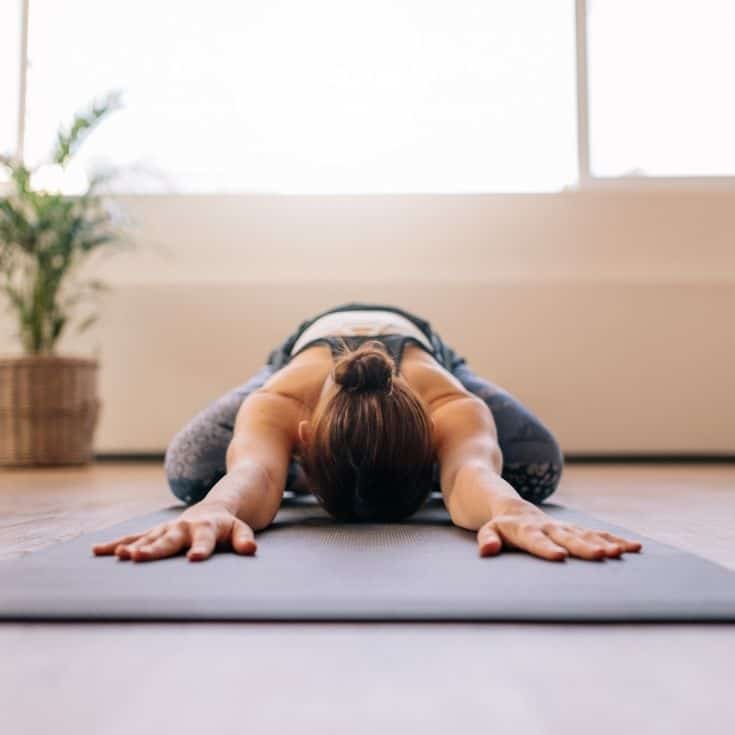
What size yoga mat do I need?
A good way to know the best size for you is to do downward dog on it and see if it feels comfortable. Your feet should be towards the end of the mat but not off of it. Taller yogis may benefit from a longer mat, but most people will find a standard mat size to be comfortable.
What is the best yoga mat for carpet?
Yoga mats work well on carpeted floor. We recommend thicker mats for carpet and a thinner mat on hard surfaces. Typically a 6mm yoga mat is perfect for carpet. The Manduka Pro is 6mm and is our top pick for practicing yoga on carpet.
What’s the best yoga mat for sweaty hands?
A sticky mat with a no slip surface texture can be helpful for yoga poses. The Manduka GRP Adapt is our personal preference as the best yoga mat for sweaty hands! Yoga towels can also help prevent slippery surfaces.
What’s the difference between a yoga mat vs exercise mat?
Compared to exercise mats, yoga mats are thinner and more firm. They are designed for low impact exercises found in most yoga practices. Exercise mats are typically a larger size and made of a thick foam or rubber to help with high impact movements.
Should I choose a 3mm vs 5mm yoga mat?
Both 3MM and 5MM yoga mats have their benefits. If you’re carrying your yoga mat with you or traveling, thin yoga mats are ideal. If you have any knee pain, a thicker yoga mat can make a big difference in your comfort level when you hold poses.
What is the best thickness for a yoga mat?
The standard yoga mat is 1/8 inch or about 3mm of padding. This thickness allows you to make a strong connection to the floor and also provides comfort to your knees on more grounded poses.
You can find travel ones as thin as 1/16 inch thick, and you may also find some with extra cushioning.
If you have knee, wrist, or lower back issues the extra padding may help you. However, the 1/8 inch thickness is best for most people.
How to Clean Your Yoga Mat
You’ll want to clean your yoga mat on a regular basis. You can clean your it with soft brush or sponge and a non-oil based soap. Just rinse the mat and then air dry. You’ll also want to make sure it’s dry before you use it.
You can also use Manduka Yoga Mat Wash after every yoga class if you’d like! You just spray it on the mat and wipe up with a cloth.
If you choose to make your own cleaning spray, look for cocktails of tea tree oil, lemon, or lavender to kill germs. Store-bought sprays shouldn’t contain bleach or alcohol. Either ingredient can destroy your mat or cause skin irritation.
Can you put a yoga mat in the washing machine?
Some yoga mats are machine washable, but you should always check beforehand. You can usually Google the brand and find out that way.
If it is machine washable, make sure to wash it separately using a gentle soap. Obviously, don’t wash with clothes either. That would be a big mess.
Can you use a dryer?
Slow your roll. You can’t put any of them in the dryer! The best way to dry them is to rub it with a towel and let it air dry.
If you have a natural mat and it’s holding onto a ton of water, roll it up and squeeze out the water. Then let it air dry.
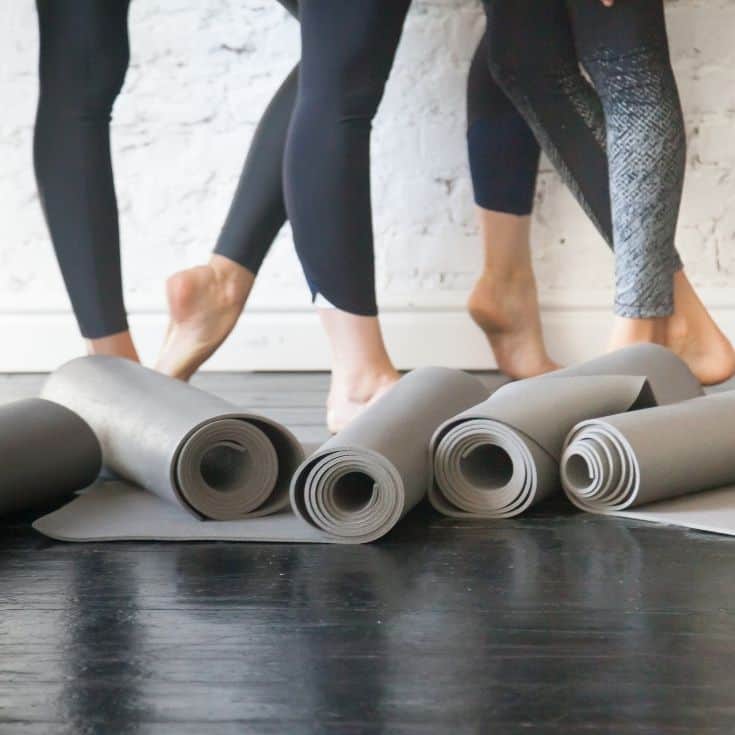
How much should you spend?
Typically a high quality yoga mat will be around $50 – 150. With that said, we suggest looking at the quality of the mat before the price. By choosing a durable mat with the right amount of cushion, you’ll save money in the long run.
Which is the right side of a yoga mat?
It depends on what the yoga mat is made of; however, typically the textured side will face up. If you’re unsure, look for a logo. The logo should also indicate the top of the mat.
How long should you keep a yoga mat?
If you’re practicing yoga regularly, the recommendation is to replace your mat 1 – 2x a year. With that said, you’ll likely know when it’s time for a new yoga mat. If it becomes uneven, has any “bald spots”, is falling apart, isn’t sticky anymore, stinks, or is getting thinner, it’s time to replace it.
conclusion
The Manduka Pro Yoga Mat is the #1 recommended mat by yoga teachers worldwide and comes with a lifetime guarantee!

